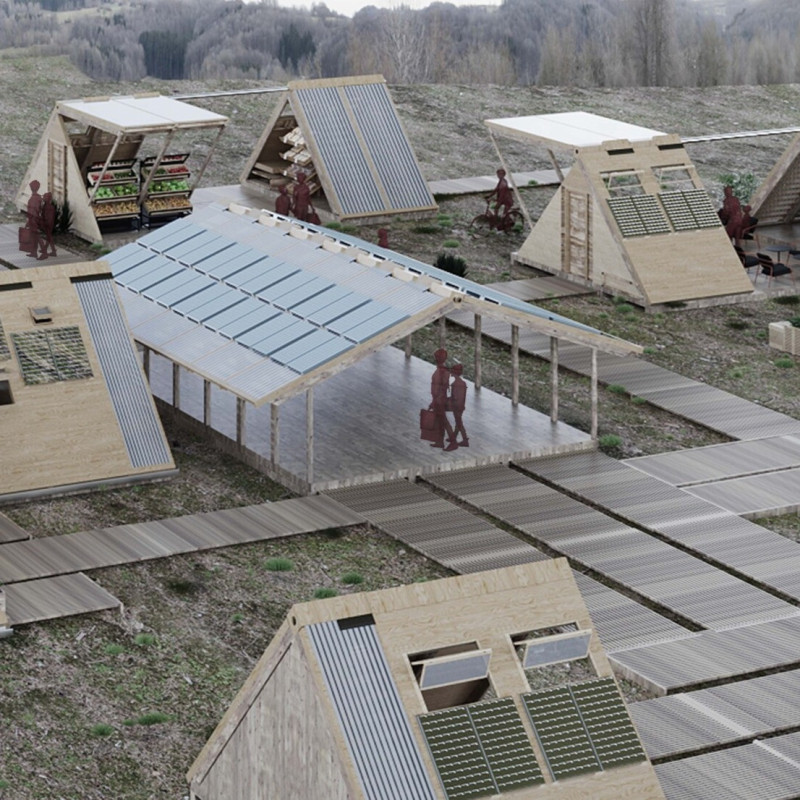5 key facts about this project
At the outset, the architecture showcases a harmonious relationship with its geographical location, leveraging local materials and construction techniques that resonate with the community's cultural and environmental context. This sensitivity to site allows the project not only to establish its identity but also to contribute positively to the urban fabric. The design incorporates expansive glass facades that invite natural light, optimizing energy efficiency and creating a visually engaging atmosphere for occupants and passersby alike. This integration of transparency signifies openness, promoting a sense of inclusivity which is essential for mixed-use developments.
The structure features a carefully curated array of materials, predominantly utilizing reinforced concrete, steel, and glass. Reinforced concrete provides the necessary structural integrity, while steel elements contribute to the overall durability and flexibility of the design. The extensive use of glass not only maximizes daylight penetration but also serves to blur the boundaries between indoor and outdoor spaces, encouraging interaction with the surrounding landscape. The careful selection of these materials not only ensures longevity and resilience but also aligns with the sustainable practices prevalent in modern architectural developments.
Spaces within the project are thoughtfully organized to ensure functionality while promoting user engagement. The layout is characterized by an open-plan design that facilitates fluid movement between different areas, thereby enhancing the visitor experience. It includes communal spaces, such as gardens and rooftop terraces, designed to encourage social gatherings and community events. These areas act as vital components in strengthening social ties among residents and visitors, fostering a sense of belonging and community.
Unique design approaches are evident throughout the project, particularly in its innovative use of green architecture elements. The incorporation of green roofs and vertical gardens not only enhances the aesthetic quality of the building but also contributes to improved air quality and biodiversity within the urban environment. These features demonstrate a commitment to sustainability, aligning the project with contemporary architectural trends that prioritize ecological responsibility. Additionally, strategic overhangs and shading devices are integrated into the design to reduce heat gain, further optimizing energy efficiency.
The building sections reveal an intricate layering of spaces, where circulation is both intuitive and inviting. The interplay between private and public realms is masterfully executed, allowing for a seamless transition from intimate residential units to vibrant public areas. This thoughtful orchestration of spatial relationships highlights the importance of community-oriented design in contemporary architecture.
As with many projects that aspire to redefine urban living, attention to detail is paramount. From the choice of finishes that reflect local craftsmanship to the incorporation of state-of-the-art technology for building performance monitoring, every aspect is meticulously considered. These details collectively contribute to a cohesive architectural narrative that resonates with its intended users.
The significance of this architectural endeavor lies in its ability to adapt to the changing needs of urban environments while maintaining an authentic connection to its locale. The project serves as a testament to modern architectural ideals, where form meets function, and sustainability is engrained in the design philosophy. Readers are encouraged to delve deeper into the architectural plans, sections, and designs to fully appreciate the nuances of this project. Exploring these elements can provide valuable insights into the innovative ideas and thoughtful design approaches that characterize this architectural achievement.


























